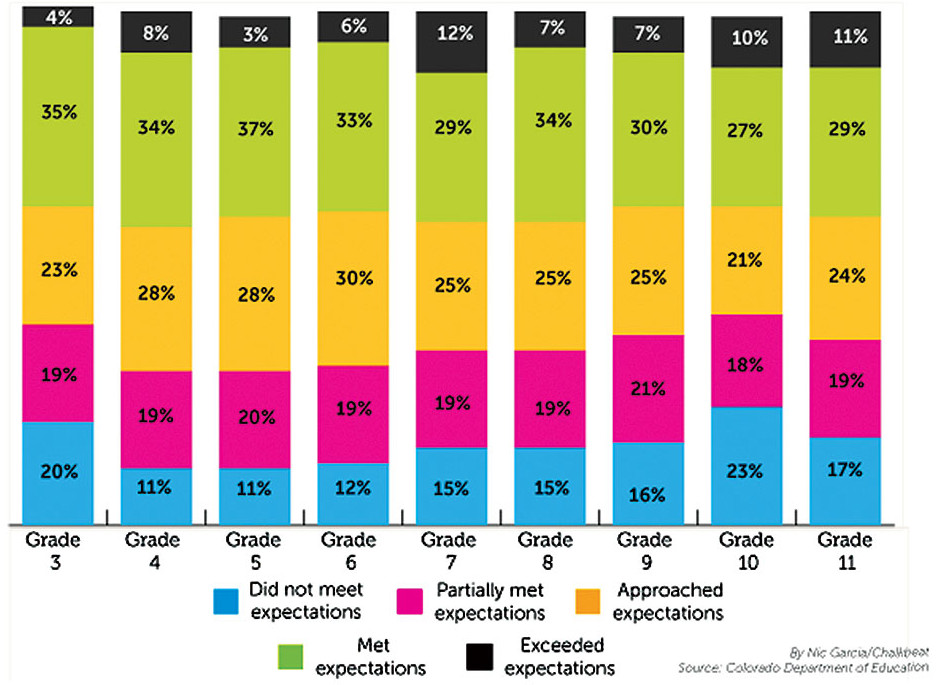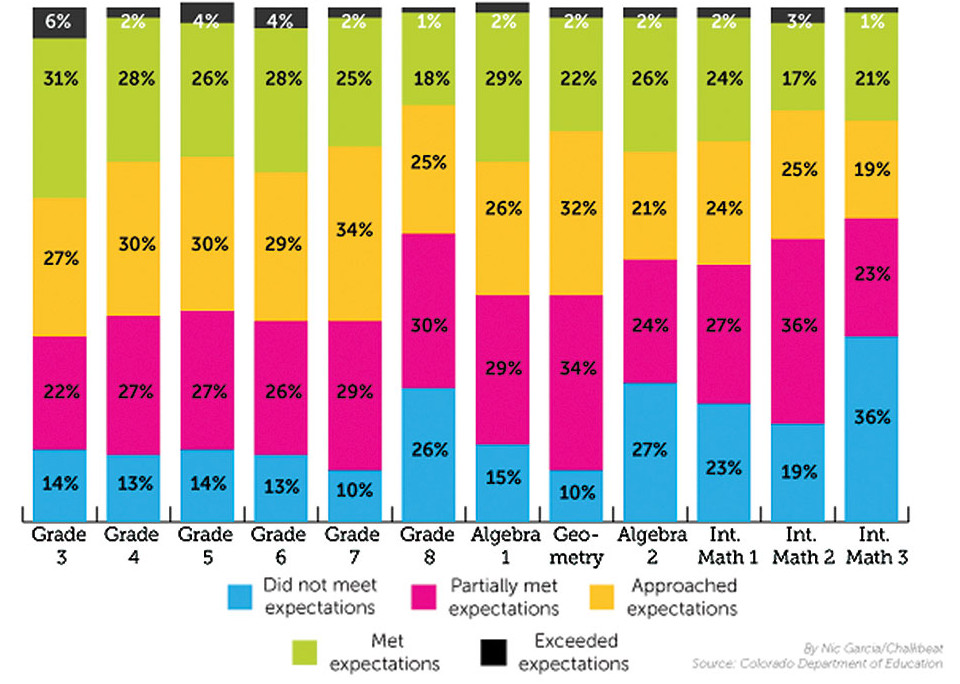
Colorado’s PARCC results, English: PARCC uses five performance levels to determine how well students demonstrate their knowledge and ability on tests. Here, in percentages, is how well students did on the 2015 test. Students in the top two categories are considered on track for college or career.

Colorado’s PARCC results, Math: PARCC uses five performance levels to determine how well students demonstrate their knowledge and ability on tests. Here, in percentages, is how well students did on the 2015 test. Students in the top two categories are considered on track for college or career. Note: Math tests in high school are given by subject, not grade.
The new Partnership for Assessment of Readiness for College and Careers (PARCC) online standardized tests were given for the first time last spring. As predicted, they returned lower scores than the prior Transitional Colorado Assessment Program (TCAP) tests. The new PARCC tests, based on the Common Core standards for English and math, are more rigorous than TCAP and require students to use critical thinking and higher-level problem-solving skills in preparation for college and careers.
Federal law has, for many years, required state-level language arts and math testing, but each state can use its own tests and academic standards, which has made it difficult to compare data. Proponents of Common Core and PARCC believe an accurate state-by-state comparison of student performance is important.
In an e-mail to parents, DPS Superintendent Boasberg wrote: “Remember these new results don’t mean your students are learning less; instead, we’ve given them a higher bar to meet and, with your support, we will help them get there … Results of these new tests in English language arts and math cannot be compared to the results of previous state exams … What the results do provide is an important baseline on which we can build and move forward.”
As with prior tests, significant achievement gaps occurred based on ethnicity and socioeconomic factors.
On the seventh-grade language arts test, for example, 58.3 percent of Asian students and 51.7 percent of whites met or exceeded expectations compared to 24.7 percent of Hispanics and 25.6 percent of black students.
In fifth-grade math, 14.9 percent of students eligible for free or reduced-price lunch met or exceeded expectations, compared to 41.9 percent of other students.
Statewide data was released on Nov. 12. Individual district and school scores are expected to be released Dec. 11 and will be covered in an upcoming issue of the Front Porch.
DPS Director of Media Relations Will Jones says the district’s goal is to mail individual student PARCC reports to DPS families by January 15.
The online education newspaper Chalkbeat published an explanation of PARCC scores and testing on Nov. 12. For more information, visit co.chalkbeat.org and search for PARCC scores. The charts at right are courtesy of Nic Garcia and were pulled from the Nov. 12 PARCC article by Nic Garcia and Eric Gorski.




0 Comments